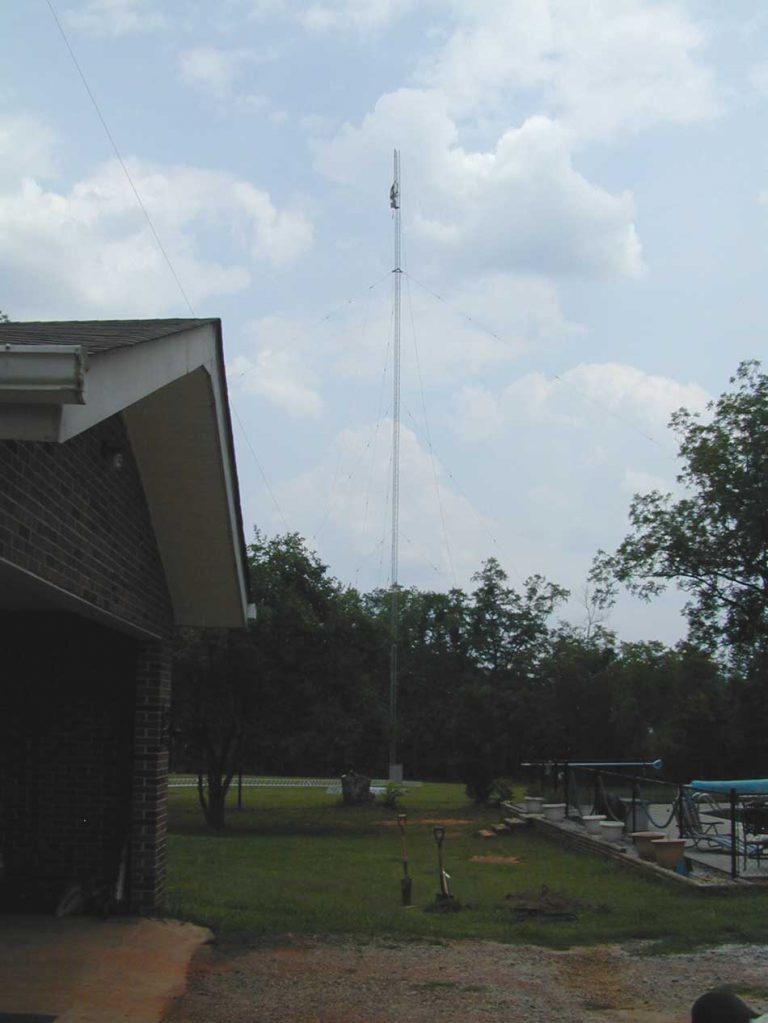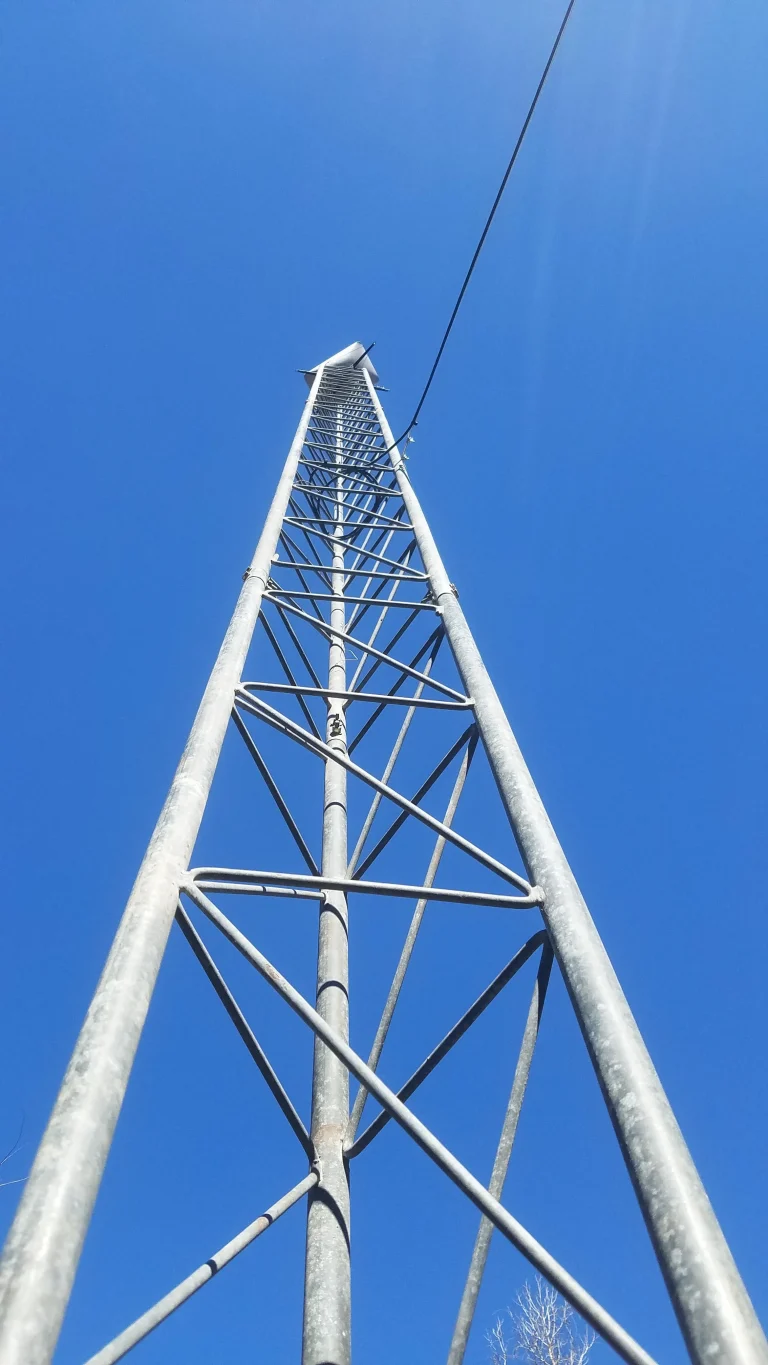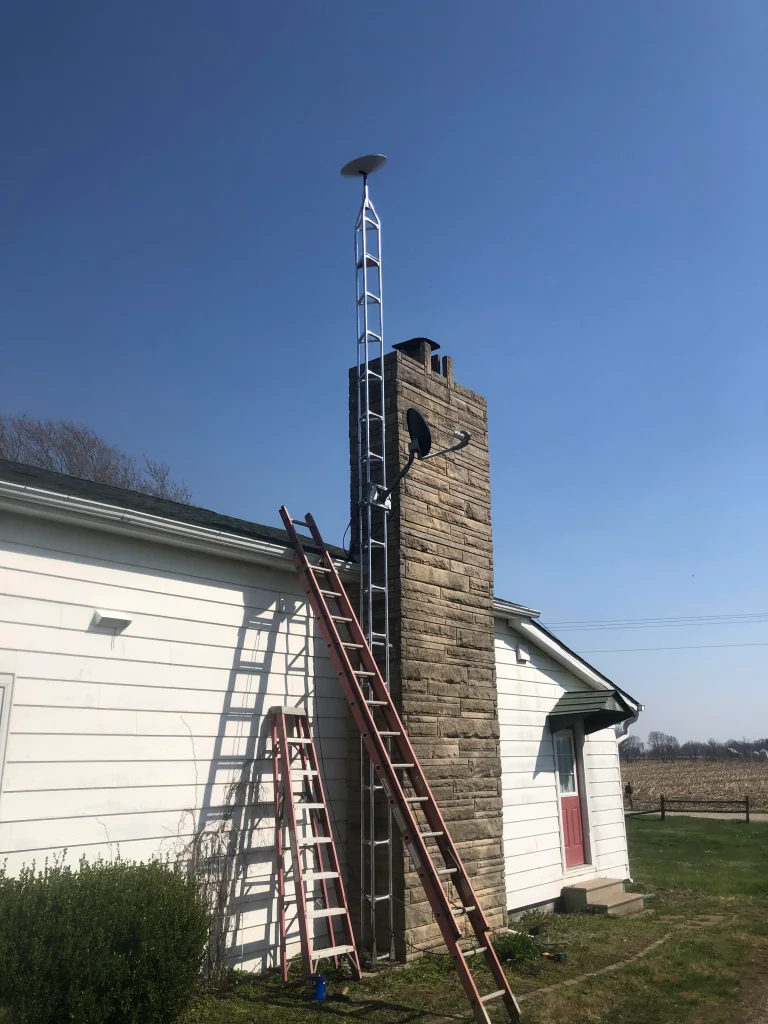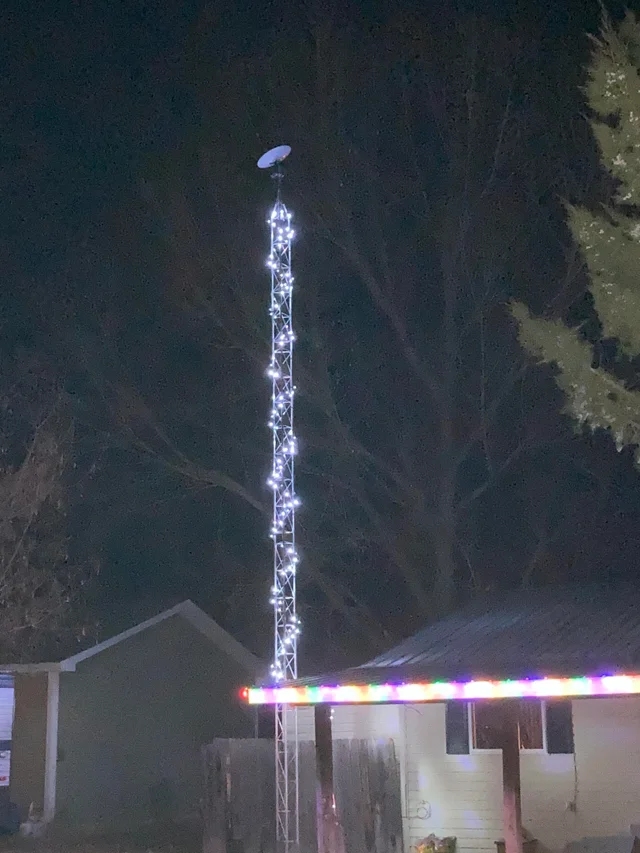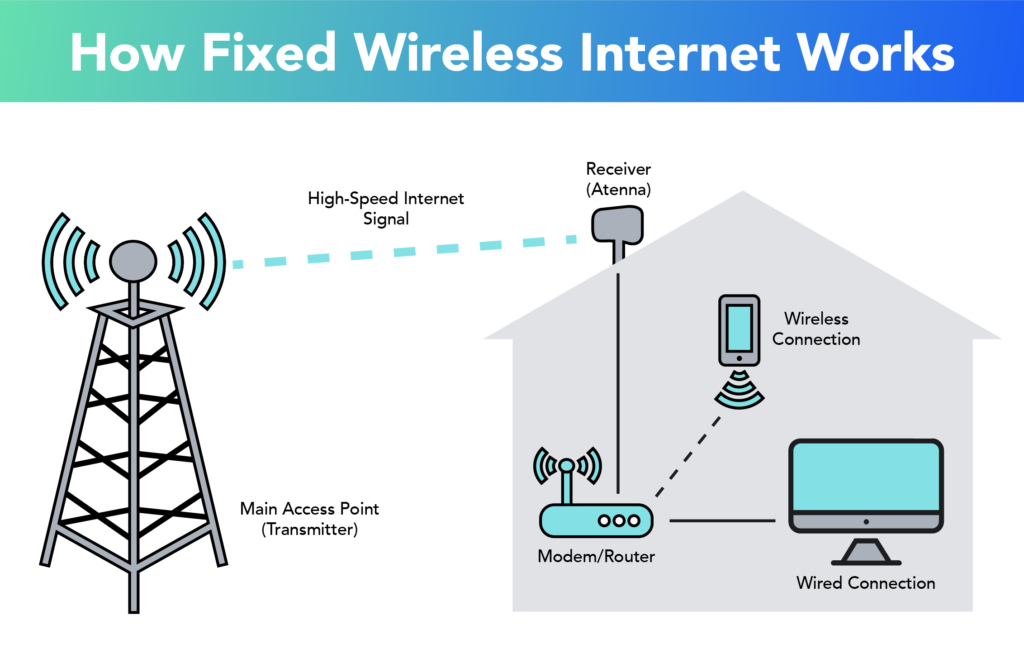What is Fixed Wireless Internet?
Line-of-sight internet, also known as wireless internet, is a type of internet connection that uses radio waves to transmit data between the provider’s antenna and the user’s receiver. This type of connection is a popular choice for rural areas where traditional wired internet options are not available.
One of the main advantages of line-of-sight internet is that it can provide high-speed internet access to remote locations that would otherwise be difficult to connect. This is because the radio waves used in this type of connection can travel long distances without interference, making it possible to connect even the most remote areas.
Another advantage of line-of-sight internet is that it is relatively easy to install and maintain. Unlike traditional wired internet connections, which require complex and often costly infrastructure, line-of-sight internet only requires a clear line of sight between the provider’s antenna and the user’s receiver. This means that it can be set up quickly and easily, without the need for complex installations or specialized equipment.
Despite its many advantages, line-of-sight internet is not without its drawbacks. One of the main challenges of this type of connection is that it is sensitive to interference from objects that block the line of sight between the antenna and the receiver. This can include trees, buildings, and other structures, which can affect the quality and reliability of the connection.
In addition, line-of-sight internet is not available in all areas. While it can be a great option for rural areas, it may not be suitable for urban areas where buildings and other structures can block the line of sight. In these cases, traditional wired internet connections may be a better option.
Overall, line-of-sight internet is a valuable option for providing high-speed internet access to remote and rural areas. While it has its limitations, it can be a cost-effective and reliable way to connect these areas to the internet.
Living in a rural area has many advantages, but there are also disadvantages. One of these drawbacks is the lack of choice of service providers (ISP in this case). Among these few options, DSL is one of the most popular service types. DSL is easier to use because it uses existing telephone lines to transmit data.
Another option that is becoming increasingly available in rural areas is fixed wireless internet. This type of Internet is transmitted over radio waves from towers to receivers located on your property (usually within a 10-mile radius of the tower). This service is especially good in areas that don’t have the infrastructure to provide high-speed internet.
DSL and WiFi on the landline are very different.
In this article, we will divide rural internet types into two types so that you can choose the best option for your needs.
Fixed Wireless Internet is reliable high-speed Internet service for rural and underserved areas. The Internet is broadcast from a main access point (usually provided by a high-speed fiber optic line) to individual receivers located in businesses, farms, and homes. Each receiver is typically within 10 miles and has line of sight to the access point.
Pros and Cons of Fixed Wireless Internet
Pros:
- Internet is broadcast over airwaves, no phone or cable connection required.
service is reliable and fast. - The speed is comparable to high speed cables. No data limit.
- Your service does not require phone service.
- You can cut the cord.
- Wired and wireless internet providers are usually locally owned and operated companies.
Cons:
- Must have line of sight to the
access point and in most cases must be within 10 miles of the access point. This can limit availability. - Wireless landlines can be more expensive than DSL. Prices are generally the same as cable Internet service.
Fixed Wireless Internet is a good Internet option for streaming video, playing music, sending bulk e-mail, running your company’s credit card machine and other web-based tools.
Example of a Fixed Wireless Network:
In the example above, we have one access point supplying multiple clients with internet.
Gallery of Fixed Wireless Internet:
